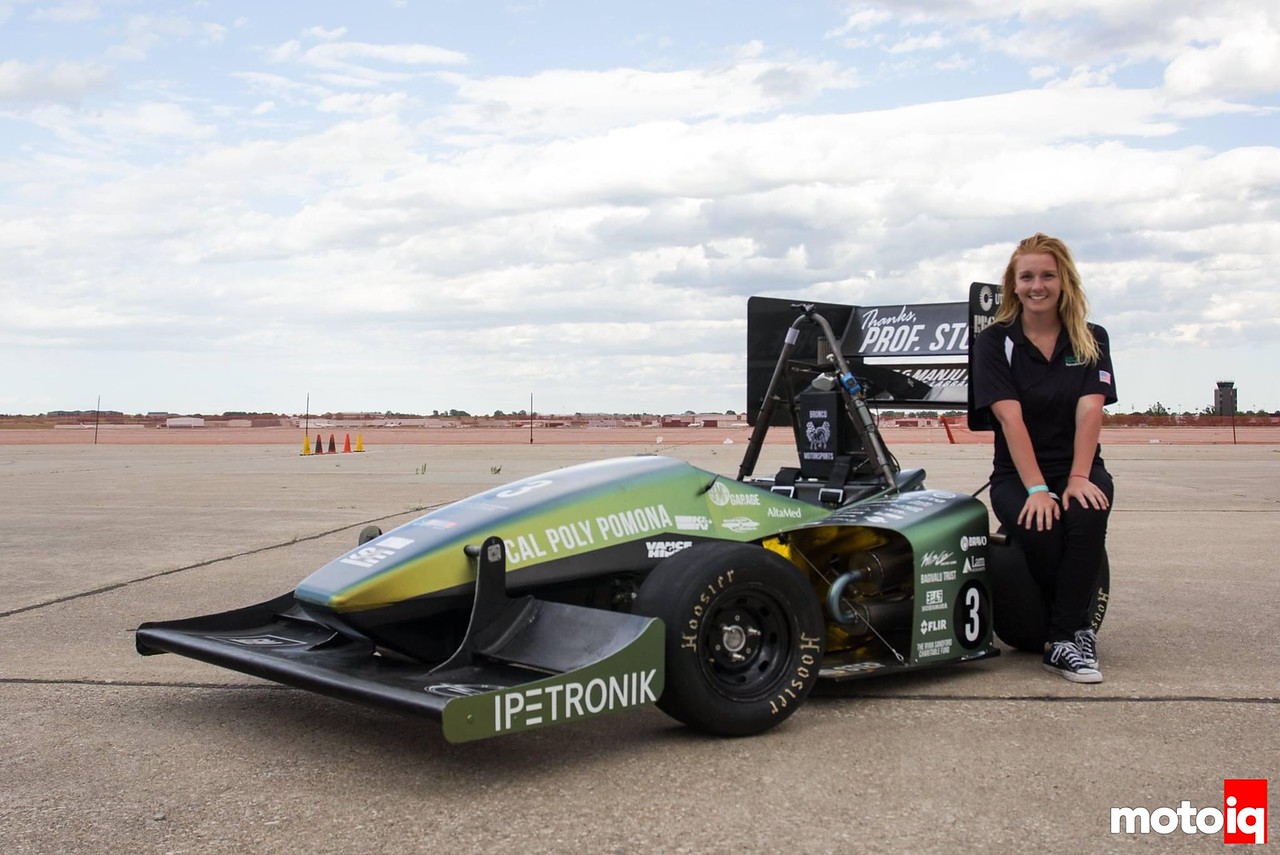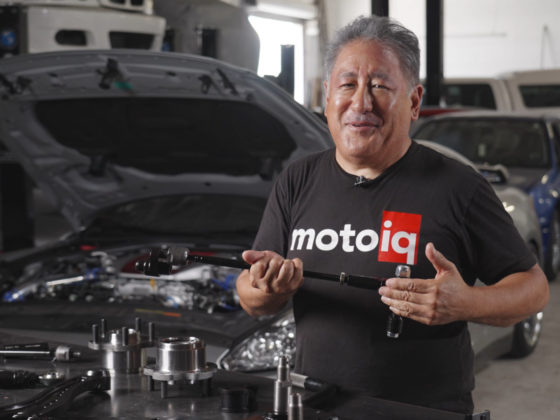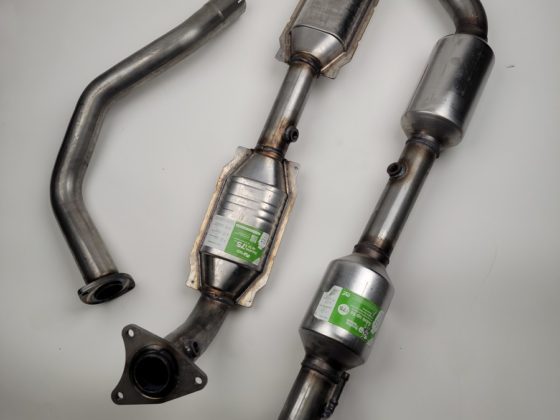
Hi, I’m Emma…but you can call me Spicy Carrot. I’m a Human-Centered Designer for NASA Jet Propulsion Laboratory with a never-ending passion for usability in the Motorsports space. I’ve studied Automotive UX, or User eXperience, and now I study Aerospace UX (including autonomy) and with this unique combo, I aim to make this industry a more driver-centered place. This focus, in tandem with engineering, is how the driver achieves maximum efficiency while not sacrificing an ounce of vehicle performance and in many cases all while preserving the vehicle’s DNA or historical lineage.

I can recall the first time a car stood out to me. I was six years old, sitting in the backseat of my parent’s Volvo 740, watching all the cars drive by us on the nighttime drive. I started learning to recognize cars by their tail lights, and I found an appreciation for how the same message was always instantly received regardless of the varying designs.

I didn’t really explore this space until college, but ever since, I’ve had quite a healthy obsession with learning how to further synergize the driving experience. It is my hope that you, too, will feel the same way.

So, what is HCD anyway? In a nutshell, Human Centered Design is the art of making things make sense. It’s a cross-pollination of Design, Psychology, and Systems Engineering.

Is it the same as engineering? No, there are some very stark differences, but both are highly technical in their own merits. That being said, engineering is “car first, driver second” by its very nature. With HCD, there is no order. The idea is they go hand-in-hand. Think of us as therapists between the user and the product. We aim to enhance the relationship.




8 comments
Welcome to the team! Glad to see another gearhead got their start in the back of their parents’ Volvo 740. Mine was a sedan.
Thanks, Billy! Looking forward to paving the way with the rest of the team.
#10 RT_M HAHA!
HCD IS a MUCH NEEDED and underappreciated field of engineering.
Too many engineers out there fail to understand that just because an engineer can use it does not mean that a normal person can.
I am guilty of the “It works for me” or “I was able to figure it out why can’t you?” mentality. It’s an easy trap to fall into if your in the weeds of the technical details and serving users who just want it to work. This is what Apple gets right most of the time. You can pick up any Apple device never having seen it before and understand how it works with in 30 seconds.
Looking forward to the perspective and insights you bring to Motoiq!
keep the one offs to a minimum.
I am old so I need straightforward and intuitive designs, especially for something like a car when driving demands your undivided attention. Distracted driving is dangerous. Many cars nowadays require too much fiddling around, HAVC, Radio, Nav, and cruise control needs to be easy to reach, easy to do by feel and not buried in multi-layer menus.
100% – mobile UI is king, thanks to Apple. I think a lot of the GUIs we’ve seen will be streamlining to CarPlay/Android Auto with maybe a custom OEM skin and very minor levels of customization beyond what’s centralized.
Welcome to the MotoIQ team!
Instrumentation design and placement is overlooked in so many cars, along with side mirror placement. It will be interesting to read your assessments of the HCD elements of various car designs.
Welcome fellow Formula SAE student!
As far as I am concerned SAAB was the leader in this field from the 1970s onward. The curvature of the windscreen to the ‘night mode’ on the instrument cluster were innovative features and so far ahead of their time!
-________________
The big thing about the Saab 900 dash is the ergonomic quality.
The dash was specifically designed to have all the operations that needed to be close by at the driver’s fingertips. Operating stalks for indicators, wipers, washers were all placed within reach of the driver’s fingers without the driver have to lift their hands off the steering wheel. The steering wheel itself was a masterpiece of comfort and control, too.
A short reach away on the door side of the steering wheel are the controls that only the driver should have access to. For example, the passenger shouldn’t be able to inadverdantly turn off the lights. Hence, they’re on the opposite side of the stering wheel. Same with the dimmer switch and the driver’s side mirror (also there because it’s the mirror for that side of the car).
A short reach away on the passenger side of the steering wheel are the controls for the audio system, the climate control system and other functions.
The dials for the climate system were all organised and set up to work so that the driver could operate them by touch without having to look at them. The fan was a small dial with discrete clicks between settings. The temperature dial worked in a smooth 180 degree arc (up for hot, down for cold – makes sense).
The confusing-until-you-got-used-to-it dial was the vent outlet dial, with a myriad of arrows pointing in all sorts of directions. Spend a few minutes to study it though, and it all makes perfect sense. The switch positions move logically from top to bottom. From the top, you can set it to the windscreen, then to the windscreen and feet vents, feet vents only, feet vents with cold air from the facial vents, the driver’s facial vents or all dash level (facial vents).
Note that those positions correspond with where the temperature setting would most likely be. When the temperature is set to hot (the dial points up) the most likely vent settings to be used are in the upper part of the selection range. It makes sense.
Many have noted the fact that the dials were also made so that they could be operated easily by a gloved hand in winter. It’s also notable that the Saab 900s heater is like a furnace!
Saab enthusiasts will also be familiar and very comfortable with Saab’s interior lighting. Green was chosen for its neutrality and the fact that it gave the closest effect to daylight conditions. The soft green lighting allows warning lights to stand out properly. It allows for the easiest reading of the matt black gauges with white lettering and orange needles – a setup that can be easily read with just a glance from the driver. Those gauges were deep set so as to avoid any glare on the 900’s superb, curved windscreen.
——
The Saab 900 didn’t start the key-in-between-the-seats thing. That was the Saab 99. The 900 carried on the tradition, though, and I’m glad they did as it’s another case of something that’s seemingly unusual making perfect sense.
The “between the seats” area is actually pretty important. Saab maintained the practice of having the handbrake there so that it could be operated by the passenger if necessary. Having the key there meant that the driver could fasten the seatbelt, insert the key, start the car and release the handbrake all in one easy set of operations.
My 1985 Saab 900 also has electric window switches in this area (not shown in the photo, above) and these are perfectly positioned so that the driver can just reach down and operate the front windows without having to look for them. They’re located right where your fingers fall if you position your arm in this area.
Saab have always made brilliant seats, and those in the 900 were a big part of this heritage. Saab made them to be very comfortable, and adjustable to the extent that over 90% of all drivers should be able to find an optimum driving position (not bad considering there were no steering wheel adjustments at that time). Seat heating kept the driver comfortable and alert.
——
The Saab 900’s interior layout was a masterclass in modern ergonmics and drew high praise from the motoring public of the time. Trends in materials and design have taken a lot away from this interior but several of the main elements still remain: the green lighting, the key position (bring back those central window switches!), the toggled air vents. Many other aspects of the 900s interior such as logical switch positioning have been taken up by others and are now the rule rather than the exception.
It’s still a truly extraordinary place to drive a car from. Supremely comfortable and very, very functional. I can only imagine what it must have been like, how revolutionary it must have been, 20 years or so ago.
That’s such an interesting concept…maximizing the usage of the “in between the seats” space. Most cars you see these days offer a gap that’s *just* big enough for your keys to slide into the abyss and never return unless you perform minor surgery on the seat to retrieve them. I wonder if SAAB was the Nokia of its time in terms of the UX quality…worth investigating further. Thanks for sharing, Bob.